Assistive Technology
Miami University has a variety of resources available to assist students. These resources can be helpful for all students, regardless of accommodation needs. We invite all Miami University students to take advantage of the available resources to make the most of their college education.
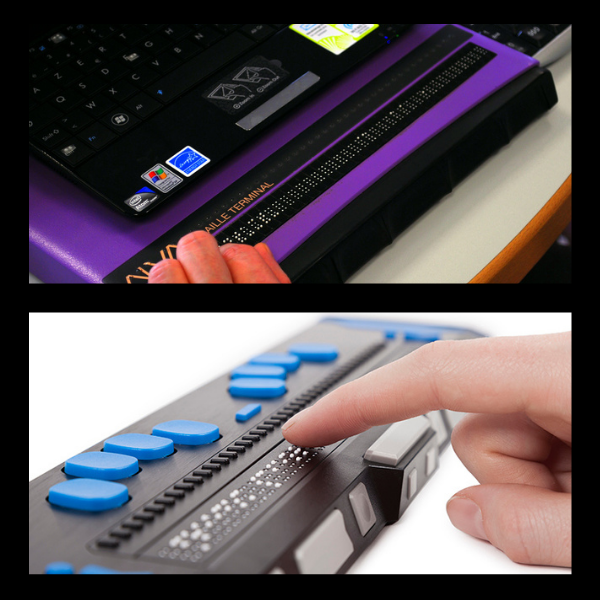
This electronic device allows people to convert information from their computer screen into Braille. Users can select from various options that display a wide range of braille cells; many are portable.
Examples of Refreshable Braille Displays
- BrailleNote Touch
- Brailliant
- BrailleBuzz
- Braille Writing Slate and Stylus
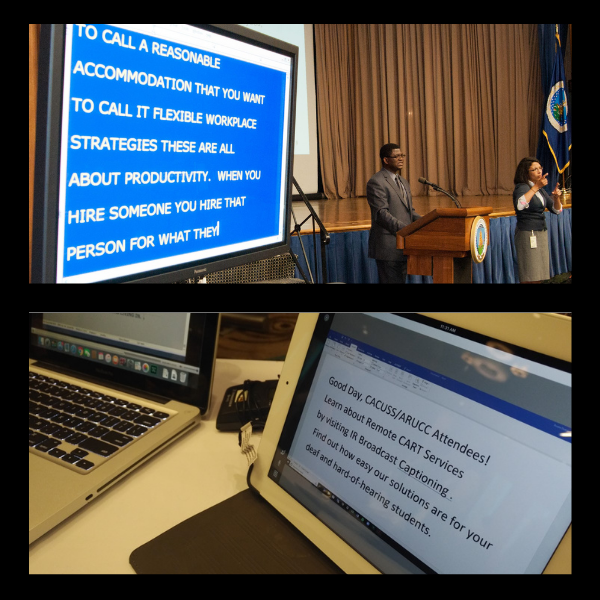
CART is an assistive technology service frequently provided to people with hearing loss or other qualifying disabilities. A professional service provider captures the spoken word in real-time. This spoken word is translated into text and then transmitted to the person electronically in real-time or provided as a condensed transcript.

CCTV monitors, also called video magnifiers, benefit people with visual disabilities by allowing them to display content in an enlarged format. CCTV devices are available in a variety of sizes, including handheld. People can use CCTV to zoom in on an object and display it in their preferred size.
Examples of Closed Circuit Television Monitors
- Basic See-More Simplicity Inline CCTV
- Reizen Vision CCTV System
- Max Portable Mini Closed Circuit Television CCTV Device
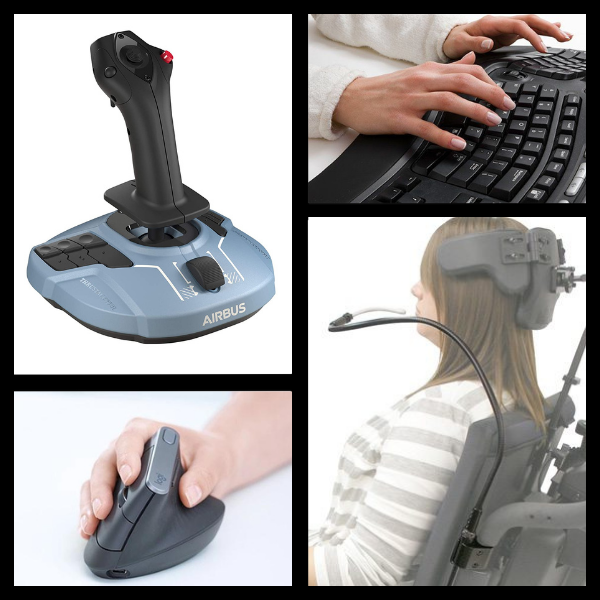
Depending on a person’s disabilities, it can be challenging to point accurately with a computer mouse or tap on a small mobile screen at a precise location. This may be because a person has visual disabilities and cannot see details on the screen or has mobility issues affecting the use of their hands. Alternative input devices allow people to interact effectively with computers or mobile devices. Although these alternate inputs work for many people, some technical systems still present barriers by requiring people to navigate and activate features using a mouse. Software, websites, and other technology should be tailored to recognize alternate keyboard-style input and clicks or taps. Various assistive technology devices, including a joystick, alternative keyboard design, alternative mouse design, and sip and puff equipment.
Examples of Alternative Input Devices
- Using a keyboard to enter information
- Alternative keyboard designs
- Alternative mouse designs
- Joysticks
- The mouth controls sip and puff devices
- A machine controlled by eye movements
- Speech recognition software
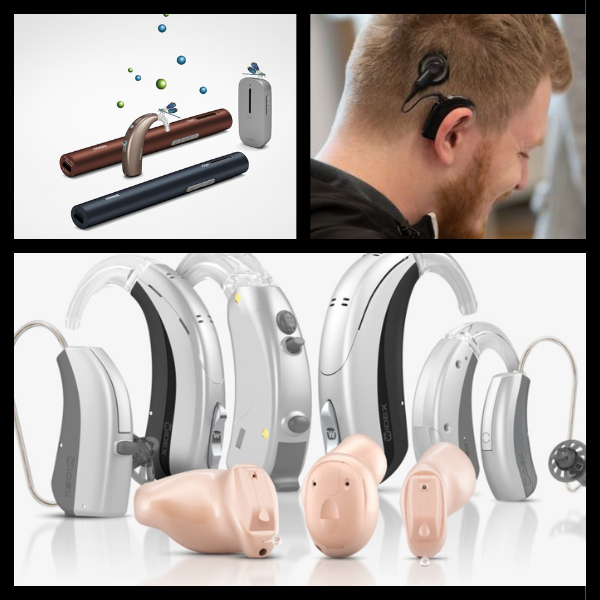
Used by people with hearing loss, the Phonak Roger Pen is a wireless mic that transmits sound to personal hearing devices (e.g., hearing aid, cochlear implant). It is beneficial when people are in noisy environments or sound is transmitted over a distance.
Examples of Assistive Hearing Devices
- FM Systems (Phonak Roger Pens)
- Hearing Aids
- Personal Amplified Systems
- Bluetooth Systems
- Audio Induction Loops
- Infrared Systems
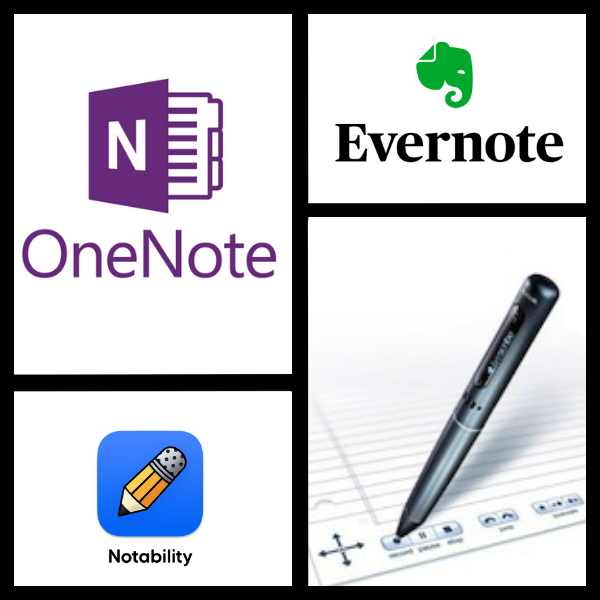
Note-taking pens and applications allow people to enhance the quality and comprehension of written notes. Many people with disabilities use these resources as assistive technology to assist them with note-taking. This is often beneficial for students whose disability is characterized by executive dysfunction, such as Post-Traumatic Stress Disorder or Attention Deficit Disorder.
Livescribe Smartpens are available for Miami students if they registered with Student Disability Services and have the digital notetaking pen accommodation. If you think you would benefit from using a Livescribe Smartpen, please contact your Student Disabilities Access Coordinator.
Note-Taking Tool Training
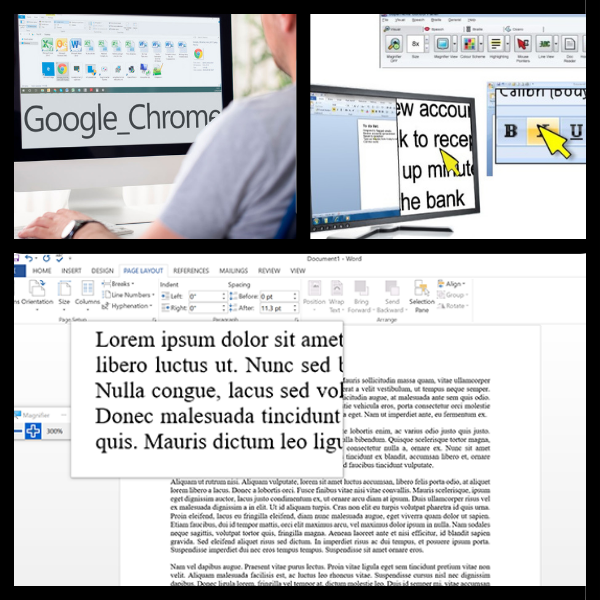
People with limited vision can use screen magnifiers to magnify their display, making it easier to manage input and output tasks. Screen magnifiers can be software or hardware-based, may magnify all or part of a screen, and may be integrated or add-on tools. Many products can zoom in upwards of 20 times enlargement.
As the name implies, high-contrast display settings provide users with a higher degree of contrast between the background and foreground elements, such as text on an online page.
Screen magnification is often used with a high-contrast display to optimize a presentation for a person with low vision.
Your operating system will likely include magnification and high-contrast display in its accessibility settings.
Examples of Third-Party Screen Magnifiers
- MAGic
- Zoom Text

Screen readers help people who are blind or with low-vision read content, operate interface elements and widgets and perform other computer tasks by hearing rather than sight. Screen readers gather information built into websites, documents, applications, operating systems, and other technologies and present the information using synthesized voice technology.
Examples of Standard Screen Readers
- JAWS: Created and distributed through Freedom Scientific
- Non-Visual Desktop Access (NVDA): A free, open-source tool made available through the non-profit NVAccess
- VoiceOver: Integrated into macOS and iOS
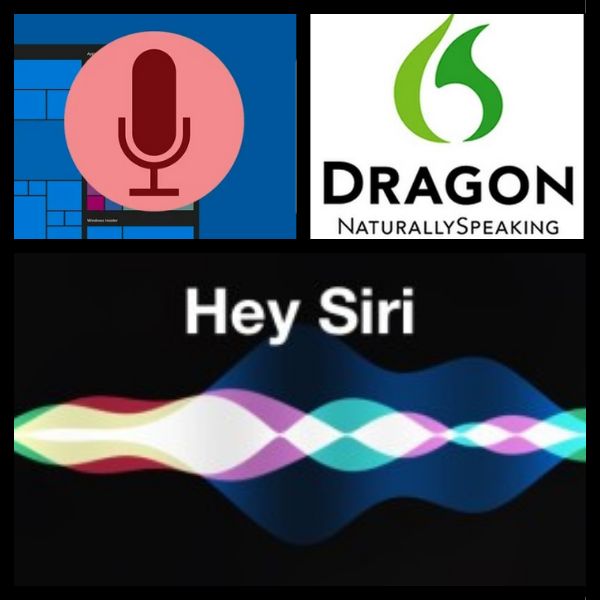
Speech recognition products are used by people with various disabilities, such as mobility impairments or dysgraphia. The software allows people to operate technology by issuing voice commands and dictation.
Examples of Speech Recognition Products
- Dragon Naturally Speaking
- Windows Speech Recognition
- iOS Speech Recognition/Siri
- Some captioning tools, such as YouTube and Camtasia, include speech recognition components.
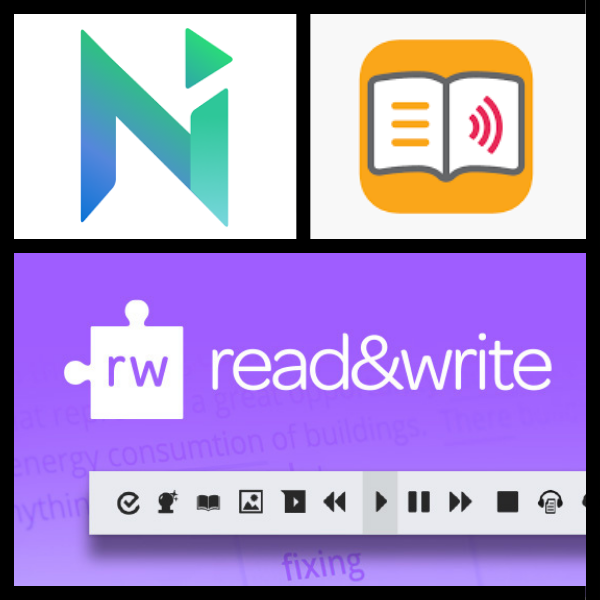
Text-to-speech software converts written text to audio. Many TTS software programs also include various literacy support tools (e.g., concept mapping and picture dictionaries).
Examples of Text-to-Speech Products
- Read&Write (Read&Write is free for students, faculty, and staff for work, school, or home use.)
- Natural Reader
- Text-to-Speech apps for Android and Apple
Bookshare is the world’s largest library and the most extensive collection of accessible ebooks, spanning 70 countries and containing more than one million titles. Accessing ebooks is free for all qualified U.S. students and schools, thanks to funding from the U.S. Department of Education, Office of Special Education Programs (OSEP).
Students who are registered with the Miller Center for Student Disability Services (MCSDS) and that qualify for accessible text accommodations are first added to Miami's Bookshare Organization membership. After that, students can add individual accounts to read and download as many books as they want.
What are the benefits of using Bookshare?
- No need to submit alt format requests to MCSDS, or show proof of purchase
- Instant download of available text
- Read on the device YOU choose
- See text and follow along with word-level highlighting
- Read as many books as you want: FREE for qualified U.S. students
Bookshare ebooks provide more reading options than other ebooks or audiobooks and make reading easier.
If you have questions about Bookshare, please contact the AccessMU Center at AccessMU@MiamiOH.edu or 513-529-0200.
Bookshare Resources
NOTE: Miami University has limited seating for Equatio. If you are interested in using this software, please contact the AccessMU Center at AccessMU@MiamiOH.edu.
Equatio by Texthelp helps people create accessible digital math without complex coding or math languages to master. Equatio runs on Mac and Windows, and from Google Chrome in the G-Suite apps.
Challenges of Math Expressions
Images of math expressions are commonly used in documents or web pages. These can be difficult to interpret for students with learning disabilities like dyslexia or dyscalculia, and those who use assistive technology. EquatIO provides tools to create digital math expressions that are more accessible to all.
Learn More about Equatio

Read&Write is a free literacy software available for all Miami students, faculty & staff. The toolbar contains many features that integrate with your daily programs, such as Word, Adobe Reader, internet browsers, and more. Contact the AccessMU Center for training to see which features are right for you!
Training Videos
Read&Write for Google Chrome Training Videos
Features
- Text-to-Speech (Have documents and books in PDF/Word read out loud)
- Digital Highlighting (Highlight notes in documents with multiple colors)
- Speech Maker (Create an MP3 audio file from a document)
- Word Prediction (Makes writing papers easier and faster)
- Language Translator
- Scan Hard Copy Documents to Word, PDF, or HTML files
Read&Write supports the following:
- Different learning styles (Example: Auditory & Visual)
- Reading comprehension
- Writing & Studying skills
- English as a Second Language (ESL)
- Research